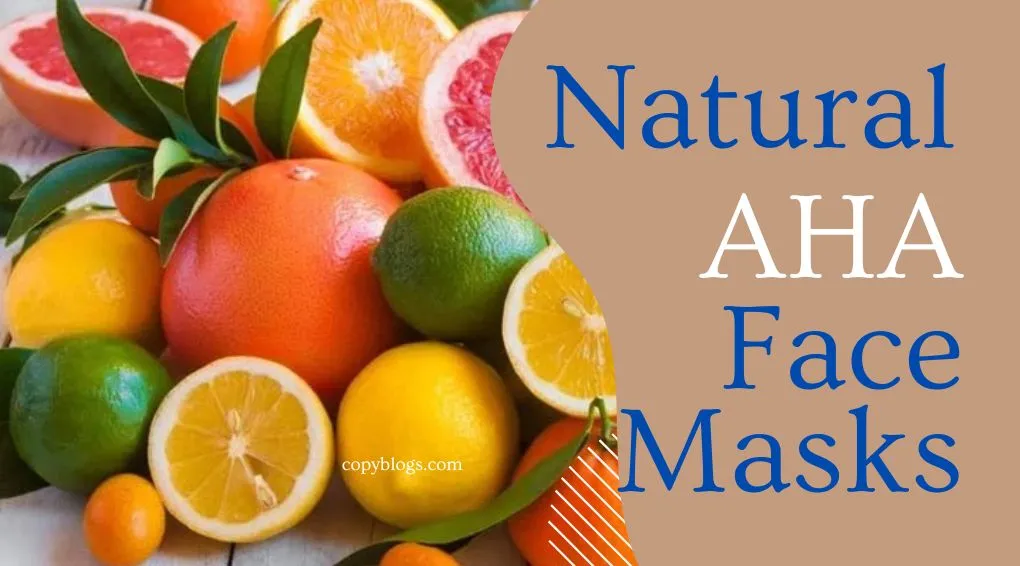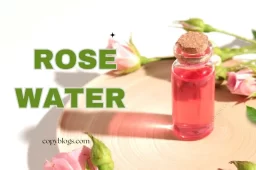
DIY AHA face masks: Top 4 AHA Face Mask Recipes
- April 02, 2025
- by
- Shanaya
Getting radiant and healthy skin doesn’t always need to break the bank with expensive products or mean weekly salon trips. Unlock the secrets of natural Alpha Hydroxy Acids (AHAs) right in your kitchen with homemade AHA face masks! These DIY AHA face masks are easy to make and provide amazing benefits like lightening skin, erasing fine lines, and enhancing overall texture. From antioxidant-laden grape tartaric acid mask to deeply exfoliating sugarcane glycolic acid mask, check out these four recipes that will step up your skincare game and remain natural and affordable.
Before diving into our DIY AHA face masks: Top 4 AHA Face Mask Recipes, let’s explore some benefits of AHA. (TrustedSource)
AHA Benefits to the Skin
AHA is a water-soluble acid that occurs in fruits, vegetables, and milk sugars. AHA is extremely water-absorbent. AHA is considered safe on the skin and also stimulates the skin to produce collagen and elastin. Because of its safety and ability to encourage the production of collagen and elastin, AHA-containing cosmetics are perfect for treating skin conditions like exfoliation, anti-aging, skin whitening, and preventing acne.
AHA is derived from seven acids:
- Glycolic Acid (sugarcane-derived)
- Citric Acid (naturally occurring from citrus fruits)
- Lactic Acid (sugar- and milk-derived)
- Hydroxycaproic Acid (derived from royal jelly, secreted by bees)
- Malic Acid (fruit-derived from pears and apples)
- Hydroxy Caprylic Acid (derived from animals)
- Tartaric Acid (derived from grapes)
Among the most popular AHAs are glycolic acid and lactic acid. Research shows that these two acids are considered the best due to their gentle nature and minimal skin irritation.
Benefits of AHA
1. Glow the Skin and Enhance Hyperpigmentation
Uneven skin tone worsens with age, and typical signs of aging like moles, acne scars, and hyperpigmentation tend to surface. With its capacity to stimulate the regeneration of new cells, AHA feeds the skin to attain a glowing complexion, eliminating dullness and sallow tones. Additionally, the elimination of dead cells enables red blood cells to take in oxygen and other nutrients more efficiently, leading to a brighter, more radiant look with less hyperpigmentation.
2. Stimulate Collagen Production
AHA has been found to act on the epidermis by stimulating growth and thickening the structure of the skin, in addition to strengthening the quality of elastin and collagen fibers. When applied to the skin, AHA quickly strips away the outer keratin layer and dead cells via ionic cell interactions, stimulating the sloughing off of aged cells and natural regeneration. It functions as a chemical exfoliant that speeds up the natural “skin turnover” process, resulting in smoother and brighter skin. AHA also offers great hydration because of its high water-holding capacity, dissolving the outer layer of dead skin and stimulating the growth of new, healthy cells.
3. Ease Hyperpigmentation
AHA is acclaimed as a “star” ingredient for its power to regulate melanin overproduction in the skin. It is also effective in diminishing hyperpigmentation, freckles, and dark spots.
4. Facilitate Acne Treatment
One of the key reasons for acne—whiteheads, pimples, and cysts—is blocked pores due to excess oil, bacteria, or dead skin. AHA functions as an exfoliant if used properly by removing clogged pores, stopping the formation of acne. AHA can even prevent the size of pores from increasing, particularly in acne-prone skin.
5. Slow down Aging Skin
AHA plays a crucial role in preventing signs of aging by reducing wrinkles and enhancing skin firmness through the stimulation of collagen and elastin production—the two “adhesives” critical for skin elasticity. However, AHA mainly affects superficial wrinkles; deeper wrinkles may require more advanced medical treatments and modern procedures to effectively smooth them out.
6. Chemically Exfoliating Dead Skin Cells
This is likely the most commonly recognized advantage of AHA for the skin. AHA chemical exfoliation washes off dull dead layers of skin, removes impurities that block pores (like sebum and dirt), and quickly rebuilds new skin cells, leading to a smoother-looking, younger-looking complexion.
Thanks to its water-soluble nature, AHA easily penetrates the skin’s surface to renew the outermost epidermal layer. It is recommended for dry, dull, or aging skin as it helps reduce fine lines, treat blackheads, improve rough texture, and maintain long-lasting smooth and hydrated skin.
Why should we prepare AHA face masks at home? – Risks of chemical AHA face masks
While chemical AHA face masks are highly effective at exfoliating and improving skin texture, they carry certain risks, especially when used improperly. These include burning, redness, and itching, particularly for beginners or those using higher concentrations. Skin irritation, rashes, or even peeling may occur as AHAs work to remove dead skin cells. Additionally, chemical AHAs significantly increase sun sensitivity, raising the likelihood of sunburn without proper SPF protection. More severe issues like changes in skin color, blisters, welts, or even chemical burns can arise if the concentration is too strong or if the mask is left on for too long. DIY AHA face masks, while not entirely risk-free, generally safer due to their milder, natural ingredients and lower concentrations, making them a gentler alternative for skincare enthusiasts looking for a secured, customizable option.
DIY AHA face masks – Top 4 AHA Face Mask Recipes
1. Grape Tartaric Acid Mask
The first DIY AHA face mask is with grape. Tartaric acid is naturally found in grapes and bananas. It smooths the skin, improves firmness, and naturally brightens the complexion. Champagne—made from grapes—is a rich source of tartaric acid, so you can use any sparkling wine for this anti-aging mask recipe. Using wine also provides the benefit of Resveratrol, a powerful antioxidant found in red grape skins and wine. This antioxidant repairs damage from UV rays and pollutants (dust) that cause premature aging, while also encouraging your skin cells to produce more natural antioxidants. Nothing beats combining it with clay and yogurt. The clay acts like a magnet, drawing out impurities, while yogurt exfoliates dead skin cells and boosts hydration.
Ingredients:
- Red or white wine: 2 tablespoons
- Grapes: 1 bunch
- Organic white clay powder: 1 tablespoon
- Honey: 1 teaspoon
Instructions:
- In a ceramic bowl (avoid metal), mix the clay, honey, and wine together.
- Squeeze a few grapes to extract the grape juice and add it to the mixture. Mix until the consistency is thick and smooth. If it’s too thick, add a little more wine.
- Evenly apply the mixture to a clean face and neck, avoiding the eye area.
- Relax and let the mask absorb for 10–15 minutes.
- Rinse off and apply a thin layer of moisturizer.
2. Citrus Mask with Citric Acid
Among Top 4 AHA face mask recipes, citrus mask is also good pickup. Citric acid offers many benefits for the skin—from brightening dark spots and acne scars to improving overall texture. Cosmetic companies commonly use citric acid in products that tighten pores and brighten skin. Try a lemon and milk mask – a DIY AHA face mask – it may quickly become a staple in your beauty routine.
Ingredients:
- Whole milk or yogurt: 2 tablespoons
- Fresh lemon juice: 1 tablespoon
Instructions:
- Mix the ingredients thoroughly.
- Apply the mixture to your face and neck, avoiding the eye area.
- Leave on for at least 20 minutes. Your skin will feel tightened as it dries.
- Rinse off with warm water, then follow up with a moisturizer.
Note: Avoid using lime (round, green, thin-skinned); opt for yellow lemons instead. Lime’s high acid content can cause rashes or dermatitis when applied to the face or exposed to sunlight within 48 hours. If yellow lemons aren’t available, reduce the lemon juice to 2/3 of the recipe.
3. Apple Mask with Malic Acid
Malic acid is most abundant in apples. It helps reduce signs of aging, diminishes acne, brightens skin tone, and promotes collagen production. It also provides moisture and is ideal for sensitive skin since its pH is balanced and does not disturb the skin’s natural acidity. For that reason, don’t overlook this DIY AHA face mask to benefits your natural beauty.
Ingredients:
- Apple juice: 2 tablespoons
- Oats: 1 tablespoon
- Honey: 1 teaspoon
- Lemon juice (optional): 2 teaspoons (omit if you have sensitive skin)
Instructions:
- Combine all ingredients in a bowl.
- Apply the mixture to your face and neck and leave on for maximum 10 minutes.
- Gently massage your face in circular motions with your fingertips while rinsing.
- Pat dry with a towel and apply a moisturizer.
Note: If you don’t have an apple, you can use malic acid from apple cider vinegar.
4. Sugarcane Glycolic Acid Mask
Glycolic acid is one of the fastest and most effective exfoliants and a popular ingredient in many anti-aging products. It can hold up to 1,000 times its weight in water, providing both intense hydration and improved skin elasticity. So, using this mask among Top 4 AHA face mask receipes once a week can visibly reduce freckles and age spots.
Ingredients:
- Coarse sugarcane (preferably organic): 2 tablespoons
- Honey: 2 tablespoons
- Juice of half a lemon
Instructions:
- In a bowl, combine the coarse sugar and honey.
- Squeeze the juice from half a lemon and mix well with the other ingredients.
- Apply the mixture to your face and neck, avoiding the eye area.
- Leave on for 5–10 minutes.
- Enjoy your natural, DIY AHA face masks and reveal a healthier, more radiant.
- Then rinse off with warm water.
Note: Glycolic acid is gentle when used at the right concentration. Limit the application time if you have sensitive skin, as many with easily flushed or reactive skin might experience adverse effects. Do not try this DIY AHA face mask if you fall into that group.
Bottom line
Incorporating DIY AHA face masks into your routine is a fantastic way to pamper your skin while reaping the benefits of natural ingredients. Whether you choose the rejuvenating grape mask, the brightening citrus mask, the collagen-boosting apple mask, or the hydrating sugarcane mask, each recipe offers unique advantages tailored to your skin’s needs. So, gather your ingredients, experiment with these Top 4 AHA face mask receipes, and let your skin glow with health and vitality. Remember, with a little creativity, skincare can be both effective and fun.
You may also like:
5 most effective ways to treat freckles at home | How to make detox face masks at home | 5 ways to treat blackheads at home



